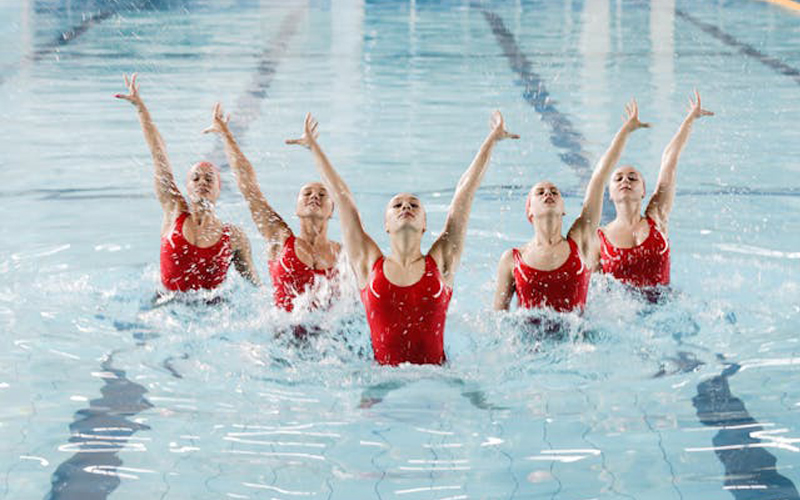An Olympic pool, also known as an Olympic-sized pool, is a specific type of swimming pool that meets the guidelines and standards set by the International Olympic Committee (IOC) for hosting swimming competitions during the Olympic Games. An Olympic-sized pool is much larger than your typical residential or public pool, and it is designed to accommodate the high-level competition and performance of Olympic athletes.
Size and Dimensions

First of all, let us tell you how long is an Olympic size pool. The average size of an Olympic pool is approximately 50 meters (164 feet) in length, 25 meters (82 feet) in width, and a minimum of 2 meters (6.6 feet) in depth. However, it’s important to note that the pool size can vary based on the specific event. For example, some swimming events require a pool length of 25 meters instead of 50 meters, which is known as a short-course pool.
In addition to the pool length, width, and depth, an Olympic pool must also have specific features, including starting blocks, lane lines, and a timing system to accurately measure and record the athletes’ performance. The pool is divided into multiple lanes to allow multiple swimmers to compete simultaneously without interference.
Pool Construction
Building an Olympic-sized pool requires careful planning and construction to meet the specific guidelines and regulations of the IOC. The pool must be constructed with durable materials and designed to minimize water turbulence, allowing swimmers to achieve their best performances. The pool is typically made of reinforced concrete or stainless steel, ensuring longevity and structural integrity.
Proper filtration and water treatment systems are also crucial in maintaining the water quality of an Olympic pool. The water must be clear, clean, and free from any contaminants to ensure the safety and well-being of the swimmers. This involves a combination of advanced filtration, disinfection, and monitoring systems to maintain optimal water conditions.
Olympic Pool Capacity
An Olympic pool has a capacity to hold a large number of spectators to accommodate the vast audience during the Olympic Games. The specific capacity depends on various factors, such as the size of the venue and the number of available seating arrangements. Olympic swimming venues can cater to several thousand spectators, creating a lively and exciting atmosphere during the swimming competitions.
Benefits of Olympic-sized Pools
Olympic-sized pools are not only designed for professional competitions but also offer several benefits for recreational swimmers, athletes, and fitness enthusiasts. The larger size of the pool allows for longer swimming distances, promoting endurance and speed training. The depth of the pool also provides ample space for diving training and other water sports activities.
Furthermore, the use of Olympic-sized pools encourages a sense of accomplishment and competitiveness among swimmers, as they have the opportunity to train in a facility that represents the highest level of swimming excellence. This can inspire swimmers of all ages and skill levels to reach their full potential and pursue their swimming goals.
Frequently Asked Questions
Final Words
An Olympic pool is a significant engineering feat that is carefully constructed to meet the exacting standards of the International Olympic Committee. With its large dimensions, optimal water quality, and capacity for spectators, an Olympic pool provides the perfect environment for high-level swimming competitions. Whether enjoyed by professional athletes or recreational swimmers, Olympic-sized pools offer a unique and rewarding swimming experience that truly makes a splash.





